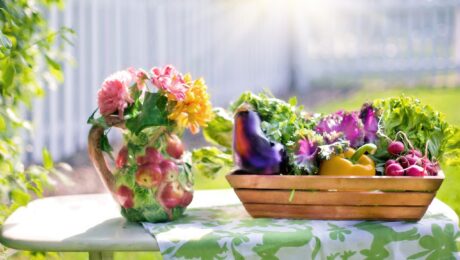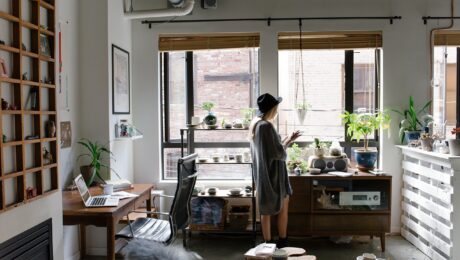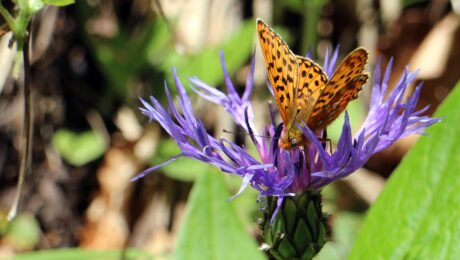10 Essential Tips for Starting Your First Garden
Are you thinking about starting your own garden but feeling a bit overwhelmed by all the information out there? Don’t worry, we’ve got you covered! In this blog post, we will provide you with 10 essential tips to help you get started on your gardening journey. Whether you have a green thumb or are a complete novice, these tips will help guide you through the process of creating and maintaining a beautiful garden.
Start small: It can be tempting to go all out and try to create a large, elaborate garden right from the start. However, it’s important to remember that gardening is a learning process and starting small will allow you to gain experience without feeling overwhelmed. Begin with just a few plants or vegetables and gradually expand as you become more comfortable.
Choose the right location: Before planting anything, take the time to observe your outdoor space and determine the best location for your garden. Most plants require at least 6-8 hours of sunlight per day, so make sure to choose an area that receives adequate sunlight. Additionally, consider factors such as soil quality and drainage when selecting a spot for your garden.
Invest in quality soil: Good soil is the foundation of a successful garden, so don’t skimp on this crucial element. Invest in high-quality potting mix or amend your existing soil with compost to ensure that your plants have access to essential nutrients and proper drainage.
Water consistently: Proper watering is key to keeping your plants healthy and thriving. Be sure to water regularly, especially during hot summer months when plants are more likely to dry out. Consider investing in a drip irrigation system or soaker hoses to make watering easier and more efficient.
Mulch regularly: Mulching not only helps retain moisture in the soil but also suppresses weeds and adds nutrients as it breaks down over time. Apply a layer of mulch around your plants to help regulate soil temperature and reduce evaporation, leading to healthier plants overall.
Learn about plant care: Different plants have different needs when it comes to watering, fertilizing, and pruning. Take the time to research each type of plant in your garden and learn how best to care for them. Understanding the specific requirements of each plant will help ensure their success in your garden.
Keep pests at bay: Unfortunately, pests are an inevitable part of gardening, but there are steps you can take to minimize their impact on your plants. Consider using natural pest control methods such as companion planting or introducing beneficial insects like ladybugs into your garden.
Stay organized: Keeping track of what’s planted and where can save you time and frustration in the long run. Create a planting schedule or map of your garden layout so that you know which plants are where and when they were planted. This will also help you plan ahead for future seasons.
Be patient: Gardening requires patience and perseverance as not everything will go according to plan right away. Be prepared for setbacks such as failed crops or pest infestations but don’t let them discourage you from continuing on with your gardening journey.
Enjoy the process: Above all else, remember that gardening is meant to be an enjoyable experience! Take pleasure in watching your plants grow and thrive, appreciate the beauty of nature, and savor the fruits (or vegetables) of your labor.
Starting your first garden may seem like a daunting task at first, but by following these 10 essential tips, you’ll be well on your way to creating a beautiful outdoor oasis in no time! Remember to start small, choose the right location, invest in quality soil, and water consistently, mulch regularly, learn about plant care, keep pests at bay, stay organized, be patient, and most importantly – enjoy the process! Happy gardening!
- Published in Uncategorized
Organic Gardening 101: A Beginner’s Guide to Eco-Friendly Planting
Organic gardening is a sustainable and eco-friendly way of growing plants and vegetables without the use of synthetic chemicals or pesticides. It promotes healthy soil, reduces pollution, and supports biodiversity. If you’re new to gardening and interested in starting your own organic garden, this beginner’s guide will help you get started on the right foot.
Start with the soil: One of the key principles of organic gardening is building healthy soil. Begin by testing your soil to determine its pH level and nutrient content. Add compost, manure, or organic fertilizers to improve soil structure and fertility. Healthy soil will ensure strong plant growth and reduce the need for chemical inputs.
Choose organic seeds and plants: When selecting seeds or seedlings for your garden, opt for organic varieties that have not been treated with synthetic chemicals. Look for certified organic options at local nurseries or online suppliers. These plants are free from harmful pesticides and genetically modified organisms (GMOs), ensuring a more natural growing process.
Practice companion planting: Companion planting involves growing different types of plants together to enhance growth, repel pests, and attract beneficial insects. For example, planting marigolds next to tomatoes can deter nematodes, while basil planted near peppers can improve flavor and ward off pests. Research companion planting combinations that work well together in your garden.
Use natural pest control methods: Instead of relying on chemical pesticides that can harm beneficial insects and pollinators, explore natural pest control methods to manage garden pests organically. Introduce beneficial insects like ladybugs or lacewings to prey on harmful bugs, create physical barriers like row covers to protect plants from pests, or make homemade insecticidal soap sprays using non-toxic ingredients.
Embrace sustainable practices: In addition to avoiding synthetic chemicals in your garden, embrace other sustainable practices such as water conservation, mulching, and composting. Collect rainwater in barrels for irrigation, mulch around plants to retain moisture and suppress weeds, and recycle kitchen scraps into nutrient-rich compost for your garden beds.
Organic gardening is a rewarding hobby that allows you to connect with nature, grow nutritious food, and support environmental sustainability. By following these tips for eco-friendly planting as a beginner gardener, you can create a thriving organic garden that benefits both you and the planet. Start small with a few raised beds or containers if space is limited, experiment with different plants and techniques, and enjoy the process of learning as you cultivate your green thumb in an environmentally conscious way.
- Published in Uncategorized
DIY Garden Projects: Fun and Creative Ideas to Enhance Your Outdoor Space
Are you looking to spruce up your outdoor space and add some personality to your garden? DIY garden projects are the perfect way to unleash your creativity and make your outdoor space truly unique. From simple planters to intricate mosaics, there are endless possibilities for enhancing your garden with fun and creative projects. In this blog post, we will explore some exciting DIY garden project ideas that will transform your outdoor space into a beautiful oasis.
Upcycled Planters: One of the easiest ways to add a personal touch to your garden is by creating unique planters from upcycled materials. Old mason jars, tin cans, or wooden crates can be transformed into charming plant containers with just a coat of paint or some decorative accents. Get creative with different shapes and sizes to create a visually appealing display of plants in your garden.
Mosaic Pathways: Add a pop of color and whimsy to your garden by creating mosaic pathways using broken tiles or glass pieces. This project may require some patience and precision, but the end result is truly stunning. Choose a design or color scheme that complements the rest of your garden decor for a cohesive look that will impress all visitors.
Vertical Gardens: If you’re short on space but still want to enjoy gardening, consider creating a vertical garden using repurposed pallets or hanging planters. Vertical gardens not only save space but also add visual interest to any blank wall or fence in your outdoor space. Plant herbs, succulents, or flowers in each pocket for a lush and vibrant display that doubles as functional greenery.
Fairy Garden: Bring a touch of magic to your garden with a whimsical fairy garden filled with miniature houses, bridges, and figurines. Create tiny pathways lined with pebbles and small plants like moss or succulents for an enchanting scene straight out of a storybook. Let your imagination run wild as you design and personalize each element of your fairy garden for a truly magical experience.
Solar-Powered Lights: Illuminate your garden at night with solar-powered lights that not only brighten up the space but also add an eco-friendly touch. Place solar lanterns along pathways, hang string lights in trees, or install solar-powered spotlights to highlight focal points in your garden. Not only do these lights enhance the ambiance of your outdoor space, but they also help reduce energy consumption.
DIY garden projects are a fantastic way to express yourself creatively while enhancing the beauty of your outdoor space. Whether you’re looking to add charm with upcycled planters, create visual interest with mosaic pathways, or bring magic with a fairy garden, there are endless possibilities for transforming your garden into an oasis of creativity and beauty. So roll up those sleeves, grab some tools, and get ready to embark on an exciting journey of DIY gardening projects that will elevate the style and ambiance of your outdoor space.
- Published in Uncategorized
Creating a Pollinator-Friendly Garden: Attract Bees, Butterflies, and More
Pollinators are crucial for maintaining biodiversity and ensuring the health of our ecosystems. Without pollinators like bees, butterflies, birds, and bats, many plants would not be able to reproduce. Unfortunately, pollinator populations have been declining in recent years due to habitat loss, pesticide use, and climate change. One way we can help support these essential creatures is by creating a pollinator-friendly garden. In this blog post, we will discuss how you can attract bees, butterflies, and more to your garden by providing the right food sources and habitats.
Choose Native Plants: Native plants are best adapted to the local climate and soil conditions, making them attractive to native pollinators. Research which plants are native to your area and try to incorporate them into your garden. Some popular choices include milkweed for monarch butterflies, lavender for bees, and cone flowers for various pollinators.
Provide a Variety of Blooms: Pollinators need a diverse range of nectar-producing flowers to feed on throughout the growing season. Aim to have blooms from early spring to late fall so that there is always something in bloom for the pollinators to feed on. Different types of flowers will also attract different types of pollinators, so having a variety will help support a wide range of species.
Create Habitat Diversity: In addition to flowers for food, pollinators also need places to nest and lay their eggs. Provide nesting sites by leaving some bare ground or installing bee hotels for solitary bees. You can also create habitat diversity by adding water sources like birdbaths or shallow dishes filled with rocks for butterflies and bees to drink from.
Avoid Pesticides: Pesticides are harmful not only to pests but also to beneficial insects like bees and butterflies. Instead of using chemical pesticides in your garden, opt for natural pest control methods like hand-picking pests off plants or using insecticidal soaps or neem oil sprays as needed.
Educate Others: Once you have created a pollinator-friendly garden in your own yard, consider spreading the word and educating others about the importance of supporting pollinators. Host workshops or events in your community about gardening for pollinators or share resources online through social media or gardening blogs.
Creating a pollinator-friendly garden is a rewarding way to support important creatures like bees, butterflies, and more while also beautifying your outdoor space. By choosing native plants, providing a variety of blooms throughout the season, creating habitat diversity, avoiding pesticides, and educating others about the importance of pollinators, you can make a positive impact on local ecosystems. So roll up your sleeves, grab your gardening gloves, and get ready to welcome an abundance of buzzing visitors into your backyard!
- Published in Uncategorized





